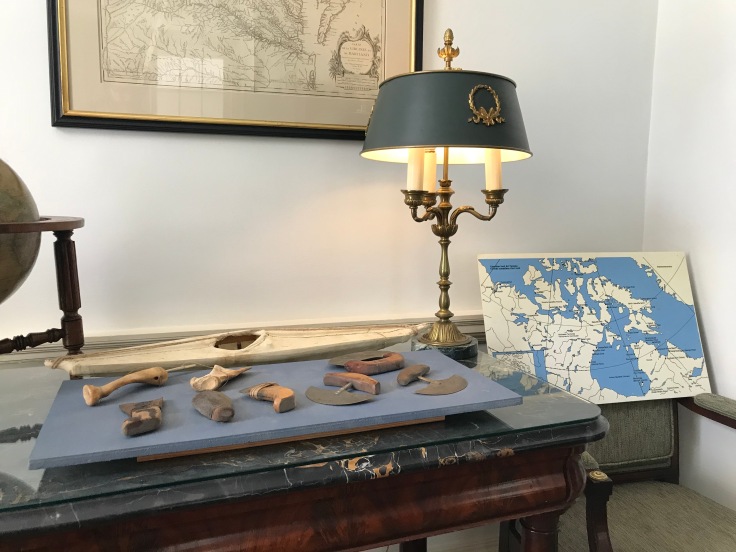Bridging Science, Art, and Community in the New Arctic
By Patrick Hancock
Organizers struck a tone of place by opening with recognition of the fact that University of Virginia was built on the unceded Monacan tribe’s ancestral land. Then, the packed three-day itinerary kicked off for the Bridging Science, Art, and Community in the New Arctic symposium with a session entitled Land, Coast & Ocean. That session, like all others throughout the event, was a mixture of scientific presentations, art performances, and community voices. Each session, in its own way, kept open the bridge across science, art, and community, which is rarely traversed in most academic settings. In this way, the sessions all tied themselves back to the core purpose of the symposium – exploration together around the New Arctic. For those unaccustomed, the Arctic regions of the world are, in many ways, the “front lines” of climate change impacts. Inhabitants of the Arctic will both see changes to their climate sooner (read: now), and in magnitude of impact higher than most other geographic regions of the world. Thus, it seemed fitting for us attendees to explore such an urgent issue in a convergent way. In sum, I feel three words could embody the symposium: Powerful, Engaging, and Hopeful.

It was powerful to witness the way the symposium itself embodied both the complexity of the New Arctic’s adaptation challenge – to the impacts of climate change (e.g. permafrost thaw causing infrastructure damage, coastal erosion necessitating relocation of villages, and temperature rise impacting the wildlife availability for hunting and fishing, just to name a few), and the vast array of resolutions to the dilemmas surrounding effective collective action. Whether as academics, artists, or community members, we like it or not, the Arctic is changing due to human caused greenhouse gas emissions. The question is how well can we support the adaptation to that change.
In the face of these challenges to the livability of the Arctic, I found it inspiring to hear Lars Nelson, from TRIBN LLC & North Slope Borough, remind us all that the greatest resource the Arctic landscape has in this transition are the people itself. Of course, the collective goal of adapting to a changing climate is not a universally frictionless ideal; adaption in the Arctic can only be resolved through intentional collaboration. This practical intentionality in research, thought, and communication was on display throughout the symposium.

The multiple avenues of engagement gave attendees several ways to digest and (to keep the consumptive metaphor going), in some cases, ingest information on the changes being measured or witnessed in the Arctic. For example, after a series of talks on various scientific studies including compelling work from Anna Lilijedahl on permafrost and Craig Tweedie on coastal change in the New Arctic, a musical composition was performed by Eight Blackbird. In this modified composition of “In a Landscape” by John Cage, the addition of ecoacoustic sound of Alaskan glaciers recorded by LTER made for an immersive experience. While each attendee may have experienced this performance differently, for me, it provided time to reflect on the previous speakers as well as a different lens to examine conceptions of the New Arctic. I think the various formats left us all invigorated for further discussion.

As the symposium built toward its close, I started to sense a feeling of collectiveness permeate the air. There were individuals from multiple generations representing science, art, and community–but critically, each generation’s voice, with some mild friction, had been expressed and heard. After all, what is the future generation if not the embodiment of hope? It is fitting to think that just as our actions towards the environment need to change to prevent the worst impacts from climate change, so might we change how we deliberate and present information about climate change actions. In some regards, this symposium might have taken a first step, or two, towards what that new form of deliberation and information-sharing could look like. It wasn’t perfect, but the first attempt rarely is. Rather, it made room for the future by providing space for a more realistic interpretation of the complexity of the dilemma we face in the appearance of the New Arctic. And this interpretation was available to all, regardless of background, experience, or discipline. Simply seeing a conversation develop at the nexus of science, art, and community through discussions of the New Arctic brings me a newfound appreciation and hope for the directions academia might take in the future. By bringing together diverse research, lived experiences, and creative interpretation, it seems that the type of deeply interconnected systematic change needed to help resolve the social dilemmas we face is within reach.
Patrick Hancock is a doctoral student in Engineering Systems and Environment at the University of Virginia.

Leave a comment